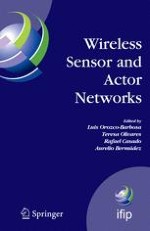The IFIP Working Group 6. 8 Mobile and Wireless Communications has a long tradition on addressing and grouping researchers and practitioners working on various mobile and wireless communications technologies and services. Due to the promising and exciting applications enabled by the development of Wireless Sensor and Actor Networks (WSAN), the IFIP WG 6. 8 had decided to launch a new series of conferences on this exciting new technology. The 1st WSAN was held in Albacete, Spain on September 24-26, 2006. After a thoroughly evaluation process by the program committee members assisted by external reviewers, a total of 20 papers from 9 different countries were selected to be included in the program. The papers selected to be included in the volume illustrate the state-of-the-art and current trends in the area of wireless sensor and actor networks. The program was organized into eight topics: 1. Actors 2. Applications 3. Security 4. Energy 5. Quality of Service 6. Localization 7. Middleware 8. Protocols We are grateful to Dan Steignart from the University of Berkeley for having accepted to deliver the opening tutorial, and Pedro Matron from the University of Bonn, Luis Redondo from MTP and Walter Stockwell from CrossBow for having accepted to participate in the panel session. We would like to thank all the members of the Technical VI Preface Program Committee and the additional referees. Without the support, the conference organization would not have been possible.
